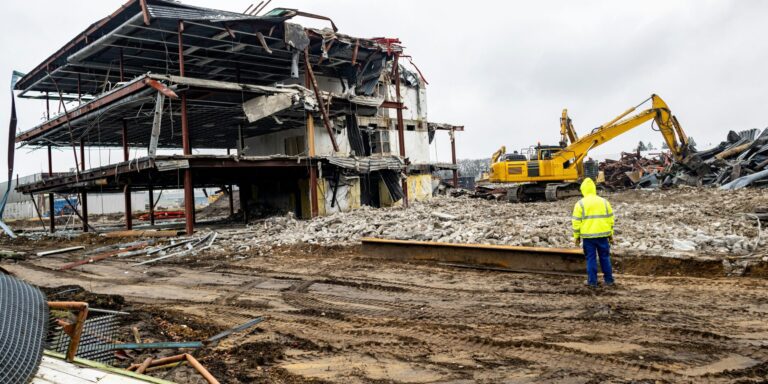In a landmark development for American commercial real estate, U.S. office supply is expected to contract in 2025—the first net decline in office space in more than 25 years. As reported by The Wall Street Journal on June 18, this shift is the result of a growing number of office demolitions, a surge in office-to-residential conversions, and a dramatic slowdown in new construction, all of which are reshaping urban real estate dynamics in the post-pandemic era.
Industry analysts say this turning point reflects a fundamental reassessment of how office buildings are used, as remote and hybrid work arrangements reduce demand for traditional office space. At the same time, pressure is mounting to repurpose underutilized properties to address housing shortages and revitalize city centers.
Conversions and Demolitions Outpace New Construction
According to data from CBRE and other real estate research firms, the total amount of office space removed from U.S. inventories this year—whether through conversions or demolition—is expected to exceed the amount added through new construction. Approximately 23.3 million square feet of office space will be taken offline in 2025, including 12.8 million square feet repurposed for residential or mixed use and 10.5 million square feet slated for demolition. Meanwhile, only 12.7 million square feet of new office development is expected to be delivered.
The result is a net contraction in office space for the first time since at least 2000. This represents a dramatic departure from the traditional expansion cycle that defined pre-pandemic commercial real estate markets.
“Developers are finally reckoning with an oversupplied office market that no longer aligns with tenant demand,” said a CBRE spokesperson. “This is a structural correction that’s been accelerated by remote work, high interest rates, and new urban living preferences.”
High Vacancy Rates, Selective Rebound
Nationally, office vacancies remain historically high, hovering around 19%. That figure reflects not only the impact of remote work but also changing tenant preferences. Many companies are consolidating into fewer locations or relocating to buildings that offer modern amenities, sustainable design, and flexible layouts.
Despite these challenges, leasing activity is showing signs of recovery. The first quarter of 2025 saw an 18% increase in leasing volume compared to the same period in 2024. Analysts point to a growing appetite for premium office spaces—often in newly renovated or reimagined buildings in urban cores.
Roughly 40% of active corporate tenants are currently seeking to expand their footprint, a notable increase from the 33% reported in 2024. Investment interest is also ticking up in markets such as New York City, San Francisco, and Boston, particularly in buildings targeted for conversion or redevelopment.
Adaptive Reuse as Urban Strategy
The rise in office-to-residential conversions is central to this transformation. Developers and city planners are increasingly viewing underutilized office towers as solutions to the housing shortage. Around 76% of current conversion projects are destined to become multifamily housing, with the remainder repurposed into hotels, academic facilities, or healthcare centers.
Large cities with aging office inventories are leading the trend. New York City alone has over 10 million square feet undergoing conversion. Washington, D.C., Houston, and Chicago are also among the top cities investing in adaptive reuse.
These projects often benefit from state and federal incentives, including tax credits and low-interest financing, as well as new zoning laws designed to accelerate mixed-use development. Advocates argue that such conversions not only improve housing access but also revitalize downtown areas, support local businesses, and reduce urban blight.
Where conversions are not feasible, older office structures—particularly those from the 1960s to 1980s—are being demolished to make way for modern, multi-use developments.
Looking Ahead
While the trend marks a clear pivot for the office sector, experts warn that the conversion boom may not be limitless. Not all office buildings are suitable for residential repurposing, and costs can be prohibitive in certain cases. Construction labor shortages, material inflation, and financing constraints also remain barriers to widespread transformation.
Nonetheless, the movement toward a leaner, more adaptive office market is well underway. Industry insiders suggest that the net decline in supply will help bring vacancy rates down in the long term, stabilizing rental prices and encouraging investment in the next generation of urban infrastructure.
This shift could ultimately rebalance urban ecosystems that were upended by the pandemic, positioning America’s cities to evolve into more flexible, resilient environments that reflect new ways of living and working.
